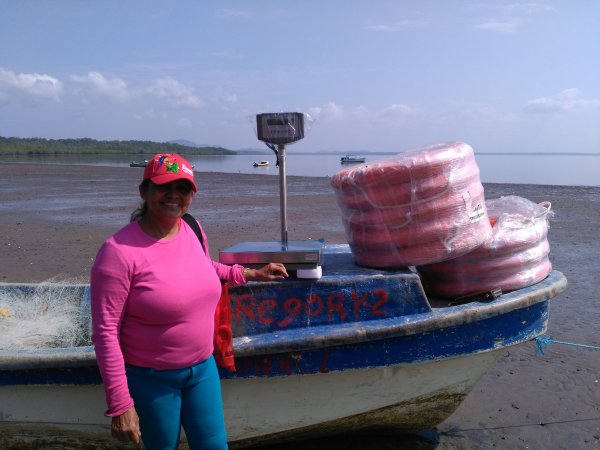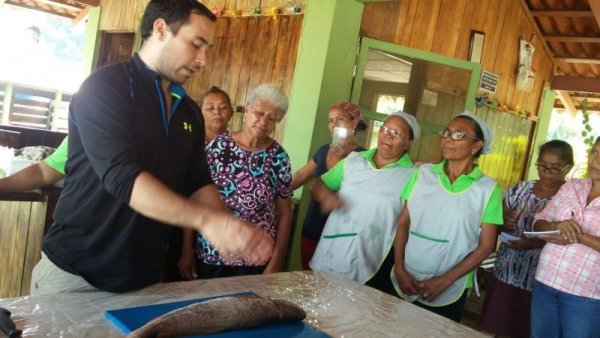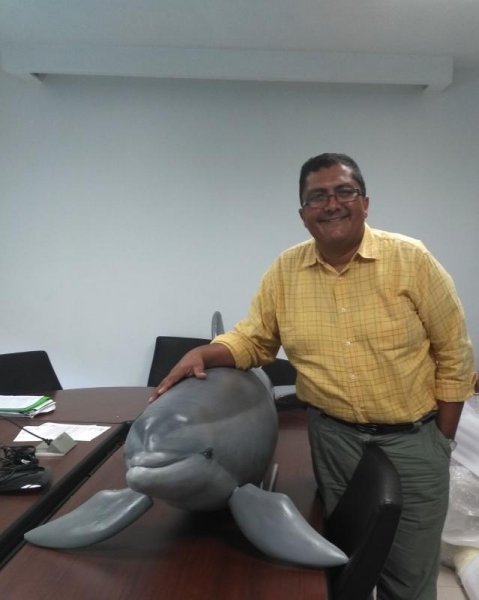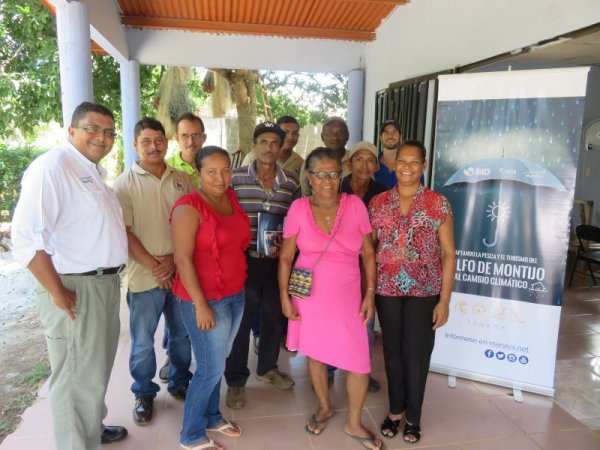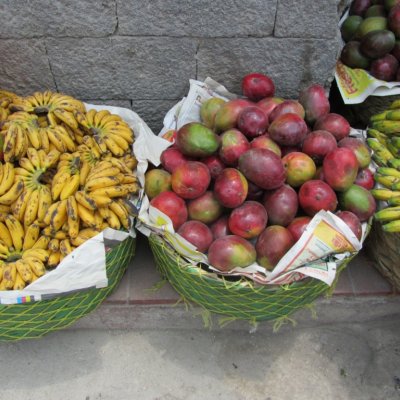Pescadora climate resilience program finds plenty more fish in the sea
Local fishers, hoteliers, restauranteurs and their families along the vulnerable coastline of the Gulf of Montijo in Panama are being negatively impacted by climate change but through the Pescadora project they’re working at every level of society to adapt and become more resilient
Pescadora is one of the 11 sub-projects of Proadapt, a regional initiative funded by IDB in partnership with NDF, building climate resilience in micro-, small- and medium-sized businesses in Latin America and the Caribbean.
“Even though it’s the only Proadapt project working with fisheries, it has the same mantra as the others,” explains Svante Persson, Senior Operations Specialist IDB, "in that it asks the question: how do you work with climate risk management and at the same time benefit local business to build resilience and improve their adaptive capacity?”
The idea behind Pescadora is to make people and businesses less vulnerable while increasing incomes, lowering their costs and diversifying their activities.
“It’s a double bottom line,” says Persson, “increasing opportunities for them to be more resilient while also improving their quality of life.”
Fishing in troubled waters
Rising sea levels, warmer waters and changes in the overall marine environment from climate change mean the fish move around a lot more than before. So, fish species that these people used to catch, which are also the most sought after in the market, have moved further out into colder waters. One example is the corvina, or sea bass, a fish prized by the Panamanians, which is at risk of overfishing due to excessive demand.
The fishers used to go out two or three hours to catch sea bass, but now they have to go out further for four or five hours. The amount of gasoline doubles or triples for their boats, increasing costs for the fishers and the environment. There are also safety issues as these are very small boats out in the open sea.
In response to this, one of the goals of the project has been to diversify their catch to include fish not traditionally found on local menus that are more abundant and found closer to the coast.
“The trick is to make the fish they can catch with the same or lower cost as before as attractive on the market,” says Persson. “That means working with production, supply side, the demand side and consumption, together with restaurants, supermarkets, and hotels locally and also along the value chain, all the way to Panama City.”
Vicente del Cid, General Marketing Manager at Pescadora’s implementing NGO, MarViva, describes part of the strategy as improving the negotiation leverage of the fishers by improving the cold chain. This allows for longer storage periods and obviates the need to sell fish catch to the first bidder. They have also worked with local groups to change their fishing practices, using more selective fishing gear that capture only larger more valuable fish, with less by-catch, while giving more juvenile fish a chance to grow up and reproduce.
Catfish gets a makeover
Enter the catfish (bagre in Spanish). For too long the catfish has had a reputation as an inferior fish that locals and foreign tourists alike haven’t wanted to see on their menus.
“Because they’re sometimes referred to as the ugly bottom feeder,” says Persson, “the belief was that these fish must also taste bad. But once they get past their preconceptions, people actually like the way the catfish tastes.”
MarViva, recently staged a very successful coup to help blow these preconceptions out of the water. MarViva hosted a Climate Resilience Conference (Aprendizajes de Resiliencia y Adaptacion Cambio Climatico) in Santiago Panama, which concluded with a surprise capstone dining experience.
Blind tasting opens new eyes
Carmen Lacambra, Director of Research and Environmental Services at Grupo Laera, who consults with IDB, was a panellist at the conference and joined the blind fish tasting to see first-hand the powerful effect it had on changing mindsets.
According to Lacambra, a diverse group of about 80 diners, made up of scientists, business people, NGOs, multilaterals, local fishers, hoteliers and restauranteurs, all sat down together to eat a well-known delicacy called ceviche – fish marinated in lemon or lime with herbs. The menu included four different fish, among them the seabass; an uglier version of seabass considered bycatch and usually thrown back; as well as the catfish. The dinner was set up as a blind tasting, with the identities of each fish withheld until after each guest had cast their vote. The results surprised with two equal first place winners – the sea bass and its humble uglier version.
“In fact, all the fish on the menu, including the catfish were delicious,” recalls Lacambra, “so the event cleverly marketed the fact there are more fish in the sea than corvina!”
Fish tales and beer making a splash
To press the point, conference diners washed down their ceviche with an artisanal brew, part of another MarViva targeted campaign to steer consumer attention away from overfished species. Each beer bottle label introduces a fish type, featuring artwork, recipe recommendations, health values, and storytelling designed to raise awareness of lesser known fish as well as honour the oceans.
“We Latin Americans love our beer!” Lacambra asserts. “And this clever campaign, designed to raise consciousness on sustainable fishing, is working on every social level.”
Big fish with local small fry
Of course, MarViva’s strength as an implementing NGO is not limited to beer branding and blind tasting.
“MarViva’s cross-sectoral connections are very strong,” Persson affirms. “It’s well respected across local and foreign businesses, fishing cooperatives, and political, environmental and academic groups, which has helped drive the success of these campaigns.”
Lacambra cites the Pescadora conference panel as a case in point: a senior IPCC representative, an academic expert, and a big international fisheries representative, were presenting alongside a local fisher and a tourism owner.
“I attend a lot of conferences,” Lacambra says, “but the extent of the cross-sectoral participation from the Pescadora stakeholders was very unusual, and refreshing.” She adds: “There was also a sense that these people were owning their own problems and trying to turn them into opportunities.”
Putting women at the helm
In Pescadora, women are also well-represented. As part of its toolkit for adaptation, Proadapt brings in a gender perspective with a unique gender toolkit, which Persson describes as the first of its kind in private-sector climate resilience. “Panama has quite a traditional culture regarding gender roles so changing mindsets had to start with bringing in the women,” confirms Lacambra.
Del Cid discusses one fishing cooperative on the Isla Leones. Of the nine cooperatives working with the program, he refers to these women as Proadapt’s star female members. The chair of the cooperative is a woman. The island’s women also run their own boldly named, Association of Artisanal Fishers the Adventurers of Leones Island, and have built their own headquarters.
Now, with the help of small grants, trainings and capacity building, these star women have converted their headquarters into a tourist information center, which also doubles as a restaurant, touting local fish delicacies, caught using sustainable practices.
Across the bay, perhaps inspired by the island adventurers, the women in Palo Seco have invented their own ‘catch of the day hamburger’, replacing beef with fish patties. While still taking care of their families, these women take care of their own production, marketing and book keeping, with growing sales success. “Even though women in Palo Seco are capable fishers, they previously did not play an active role in the association. Gradually the mindset has changed and now the women of the community are all part of the cooperative and have a decision-making voice.”
Need for all-hands-on-deck
Del Cid explains that the journey to women’s empowerment began some years earlier here in response to the threat of lower fish yields.
“Most communities were quick to realise that employing only 50% of their population was not the right recipe for a sustainable future.”
Women in the Gulf of Montijo have traditionally taken the lead in diversifying household incomes, previously dependent on only fishing. Some women have rocked the family fishing boat with new ideas like converting the boats for local tourism outings. These could include whale watching or pleasure trips to nearby sights. Other local women have begun growing and marketing local herbs and vegetables to match the new fish on the menu and serve the growing number of small restaurants and hotels. Generally, women are more active further down the value chain, running the fishing collection centers, keeping the accounts and other back office functions, or working at the front lines of sales and marketing. For example, if their husbands are taking tourists out on the boats then they will take the lead in client relations onshore.
During three years of Proadapt, Del Cid observes: “There’s no doubt the project has served to legitimize women’s leadership in traditional male domains, by influencing the fathers, husbands and brothers, who benefit from diversifying incomes, to help make a gender mainstreaming more of a norm across the region.”
Persson concludes: “Women working with MarViva to evolve a more diverse and appealing food and tourist culture is also another part of the push to change the mindsets of Panamanians, which means having Panamanians choose their own country for destination tourism.”

